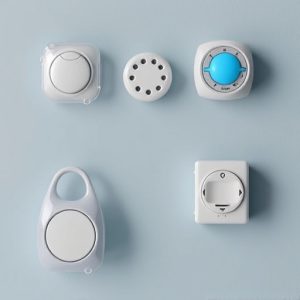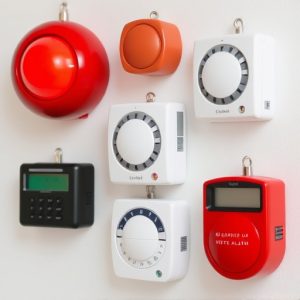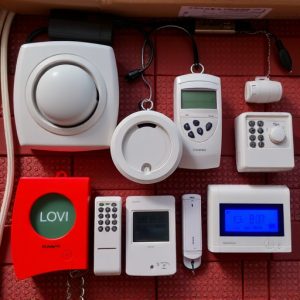Silent Alerts: Empowering Safety with Discreet Wearable Devices
Wearable emergency devices provide a discreet yet powerful safety net with silent alerts, GPS tracki…….
Wearable emergency devices provide a discreet yet powerful safety net with silent alerts, GPS tracking, automatic fall detection, and personalized contact lists. These compact gadgets send immediate help signals without public distress, enhancing personal safety in remote areas or situations where loud alarms are inappropriate. Silent alerts use subtle vibrations or non-auditory cues, with personal alarm sounds tailored to maintain privacy and effectiveness, measured within the 40-60 dB range to avoid desensitization. Regular testing, communication with emergency services, and optimizing device features maximize their benefits, offering unparalleled peace of mind in high-risk environments.
In today’s fast-paced world, wearable emergency devices offer a modern safety net for unforeseen circumstances. With silent alert features, these gadgets provide discreet yet powerful protection. This article delves into the functionality and effectiveness of personal alarm sounds, exploring how far they can reach and the best practices for implementation. From understanding the technology to ensuring peace of mind, we’ll uncover the crucial role these devices play in emergency situations.
- Understanding Wearable Emergency Devices: A Modern Safety Net
- Silent Alerts: The Discreet Yet Powerful Feature
- Personal Alarm Sounds: Decibels and Effectiveness
- Ensuring Peace of Mind: Implementation and Best Practices
Understanding Wearable Emergency Devices: A Modern Safety Net
Wearable emergency devices, often equipped with silent alerts, represent a significant advancement in personal safety. These compact gadgets are designed to be easily carried or worn, offering a discreet yet powerful safety net for individuals in various situations. The primary function is to provide an immediate and quiet signal for help, ensuring that users can get assistance swiftly without alerting others to their distress publicly.
These devices go beyond traditional personal alarms by incorporating advanced features such as GPS tracking, automatic fall detection, and personalized emergency contact lists. With a simple button press or automatic activation, they emit silent signals that can be heard within a certain range, allowing first responders to locate the wearer quickly. The effectiveness of these alerts extends the reach of personal safety, especially in remote areas or situations where loud alarms might not be appropriate.
Silent Alerts: The Discreet Yet Powerful Feature
Silent alerts are a game-changer in wearable emergency devices, offering discreet yet powerful protection. Unlike traditional loud alarms that can draw unwanted attention or be ignored, silent alerts use subtle vibrations or other non-auditory cues to signal distress. This feature is particularly beneficial in situations where discretion is crucial, such as when traveling alone, attending social events, or facing potential threats in remote areas.
The range of personal alarm sounds designed for silent alerts varies, ensuring users have options tailored to their preferences and needs. Some devices employ subtle vibrations that can be felt but not easily heard, making them ideal for quiet environments. Others incorporate gentle, yet noticeable sound signals that alert nearby individuals without causing a scene. How far these personal alarm sounds travel depends on factors like the device’s output power, environmental noise levels, and the wearer’s location—ensuring privacy while still providing effective protection.
Personal Alarm Sounds: Decibels and Effectiveness
Personal Alarm Sounds, measured in decibels (dB), play a pivotal role in the effectiveness of wearable emergency devices. A common misconception is that louder sounds are always better; however, research suggests that the human ear becomes desensitized to constant noise above 85 dB. Thus, while a piercing scream might catch immediate attention, it’s not necessarily the most effective personal alarm sound.
For wearable devices, silent alerts or subtle beeps in the 40-60 dB range have proven more reliable. This decibel level is high enough to alert users without causing hearing damage or becoming annoying in everyday settings. The effectiveness of these sounds lies in their ability to disrupt normal sensory processes, ensuring a prompt reaction during emergencies while maintaining discreteness and user comfort.
Ensuring Peace of Mind: Implementation and Best Practices
Ensuring Peace of Mind: Implementation and Best Practices
Wearable emergency devices with silent alerts offer unparalleled peace of mind, especially in high-risk environments or for individuals with safety concerns. The primary advantage lies in their ability to discreetly signal for help without drawing attention, ensuring privacy during critical situations. These devices emit subtle vibrations or other non-audio cues to alert wearers and nearby people about an emergency, allowing for swift response without causing public alarm.
To maximize the effectiveness of these devices, several best practices should be followed. Users must familiarize themselves with the different alert modes and customize settings according to their preferences and surroundings. Regular testing and maintenance are crucial to ensure proper functionality when needed. Additionally, keeping a clear line of communication open with emergency services and loved ones can significantly enhance the overall safety network. Understanding how far personal alarm sounds and optimizing device features accordingly plays a vital role in ensuring effective distress signaling.
Wearable emergency devices with silent alerts represent a significant advancement in personal safety, offering discreet yet powerful protection. By understanding the effectiveness of personal alarm sounds and implementing best practices, users can ensure peace of mind knowing they have a reliable safety net. In terms of how far personal alarm sounds can reach, decibel levels play a crucial role, with louder noises carrying farther and potentially deterring potential threats. Ultimately, these devices provide a game-changer solution for navigating bustling environments, enhancing individual security and tranquility.


